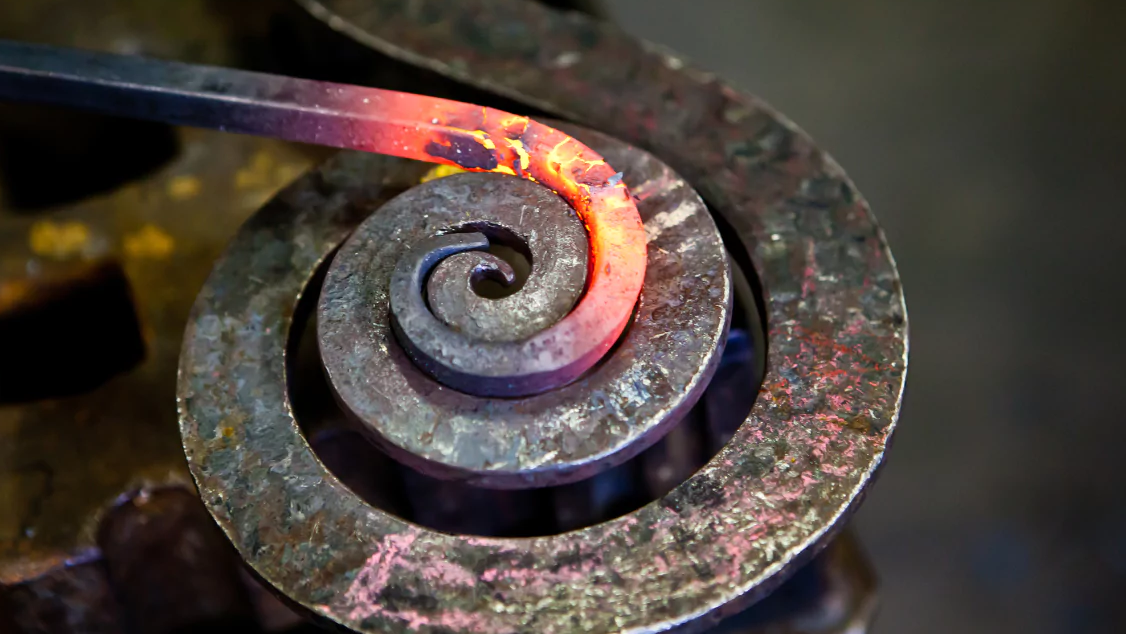Metal forging is a manufacturing process that uses external forces to reshape metals. It is widely applied in industries such as automotive, aerospace, and construction. In the forging process, deformation speed is a crucial factor that directly impacts the metal's plasticity, microstructure, and the quality of the final product. So, how does deformation speed influence the forgeability of metals? This article will explore this fascinating topic.

What Is Deformation Speed?
Deformation speed refers to the rate at which a metal changes shape during forging. In simple terms, it is the speed at which external forces are applied to deform the metal. Deformation speed is typically expressed as the strain rate, which is the amount of strain experienced per unit of time.

How Does Deformation Speed Affect Forgeability?
1.Plasticity: A Boost or a Barrier
- At lower deformation speeds, the grains within the metal have more time to rearrange and undergo dislocation motion, resulting in more uniform deformation and improved plasticity.
- At higher deformation speeds, grains cannot adjust quickly enough, leading to localized stress concentration and potential cracking or fracturing, thereby reducing plasticity.
2.Temperature Effects and Thermal Softening
- In hot forging, metal flowability improves as the temperature increases. When deformation speed is slow, the heat generated during deformation has enough time to dissipate, allowing for a more uniform temperature distribution.
- If deformation speed is too fast, localized temperatures may rise rapidly, leading to "thermal softening." In such cases, localized areas of the metal may deform excessively or develop defects.
3.Evolution of Microstructure
- Deformation speed influences grain refinement. At slower speeds, dynamic recrystallization occurs more thoroughly, producing uniform and fine grains, thereby enhancing the mechanical properties of the forged part.
- When deformation speed is too high, the recrystallization process may lag behind the deformation, leading to grain coarsening and reduced microstructural performance.
4.Work Hardening and Dynamic Recovery
- Slower deformation speeds facilitate dynamic recovery, reducing the effects of work hardening and making the forging process smoother.
- Faster deformation speeds may cause significant work hardening, which can increase the material's strength but also makes forging more challenging.
How to Choose the Right Deformation Speed?
In practice, selecting the appropriate deformation speed requires balancing material properties, forging processes, and product requirements. Here are some suggestions:
1.Low Deformation Speed
- Suitable for high-plasticity, low-work-hardening materials like pure aluminum or mild steel.
- Ideal for forging complex-shaped parts to ensure better control of metal flow.
2.High Deformation Speed
- Commonly used for high-strength alloy steels and titanium alloys.
- Suitable for processes requiring rapid shaping, such as high-efficiency industrial production lines.
3.Dynamic Balance
- Combine the material's deformation resistance with temperature conditions to select an optimal deformation speed, achieving a balance between forging efficiency and product quality.

 en
en  fra
fra  de
de  ru
ru  gle
gle  th
th  ara
ara  it
it  jp
jp  kor
kor  zh
zh 




